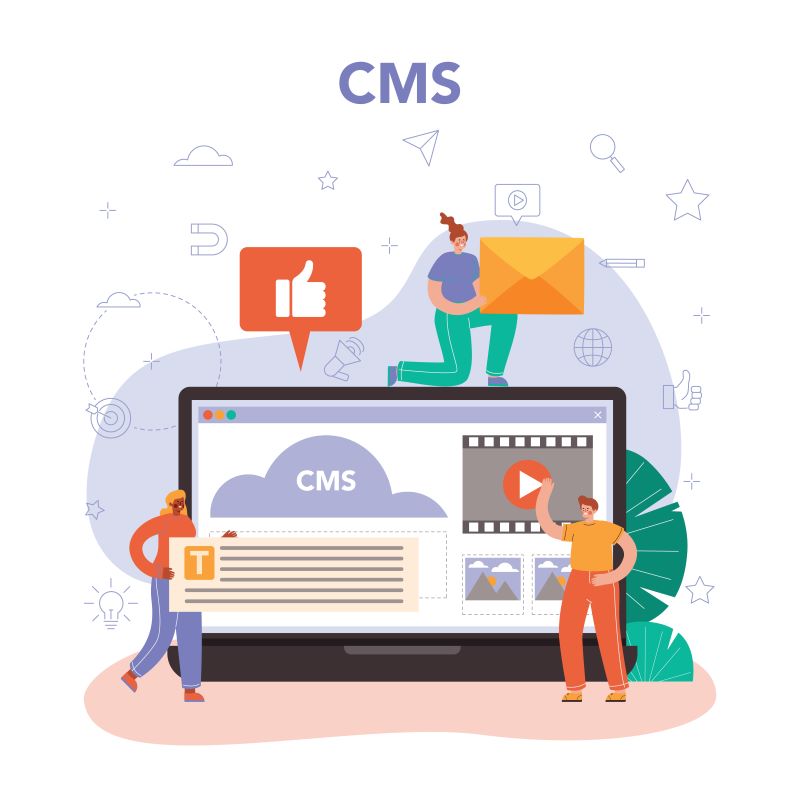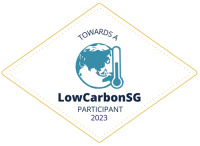Are you aware that you indirectly contribute to environmental damage every time you upload an image or video to your website?
Besides burning fossil fuels and other energy-consuming activities, digital elements such as images and videos also contribute to carbon emissions in a surprisingly large way!
Most website owners or companies are oblivious to this fact, as they’re usually caught up in the aesthetic and usability of the website. This lack of awareness means many are generating high levels of carbon dioxide (CO2) emissions each year from their online activities.
Various studies estimate that the actual global emissions of digital activities are around 2.1-3.9%.
This is equivalent to the emissions of the entire aviation industry!
To minimise the environmental damage caused, it is important to understand the carbon cost of using digital elements when designing a website.
If you are a developer, website designer, or marketer creating content, then this post is for you! This post will uncover the carbon costs of digital elements and how to reduce their environmental damage to create greener and more sustainable websites.
The Carbon Cost of Digital Elements
Images Speak Louder Than Words 📷
Images enhance the user experience, but they come with a carbon cost. High-resolution, uncompressed images can significantly contribute to a website’s carbon footprint.
Let’s consider an uncompressed, high-resolution image, i.e., 4000 x 3000 pixels with a file size of around 36 megabytes (MB) in BMP format.
Assuming an average carbon footprint of 5g of CO2 per megabyte to transmit the image from a server to the user’s device, the total estimated carbon footprint of transmitting the single image is about 180g CO2.
Factors such as the user’s location, the specifics of image compression, the energy efficiency of servers, and the use of content delivery networks can affect the actual carbon footprint.
So to put it in a broader perspective, if a website serves many high-resolution images and a wide user base, imagine the size of the entire carbon footprint that comes from serving these images!
Lights, Camera, Carbon: Videos in the Digital Age 🎥
Videos are powerful storytelling tools, yet they demand substantial server power and energy consumption.
Let’s consider the carbon footprint of a standard 1080p HD video for digital content. Various factors, such as video resolution, duration, the user’s location, compression, and the energy efficiency of the servers, come into play.
Assuming a compressed file size of 8 MB per minute of video and an estimated 5g CO2 emissions per MB needed to transfer over the server to the user, it will emit 40g of CO2 every minute of video play.

Plugin Play: Balancing Functionality and Impact 🔌
Plugins can supercharge your website, but some may come with a hefty carbon cost.
Estimating the carbon footprint of plugins is challenging as there are a wide variety out there with varying resource requirements and different functionalities.
When estimating the carbon cost of plugins, consider factors such as server load (to be hyperlinked), database interactions, external requests, and code efficiency as they affect the amount of carbon emitted.
Code Crunching for Carbon Reduction 💻
It’s no surprise that code—the written form of instructions and data used to create computer programs—is a major carbon contributor.
Writing code consumes a lot of energy due to the high demand for hardware resources involved.
What’s more, it consumes energy even after being written. Opening a website or using an app requires processing the written code, resulting in energy consumption.
Code that is not optimised for speed and efficiency leads to a higher carbon footprint. More carbon emissions can result from regular website updates or frequent code changes.
Your Next Steps: Optimise for Sustainability
So, isn’t it mind-blowing to know that the cumulative carbon footprint from digital elements contributes to environmental damage?
Well, there’s hope!
By learning the steps below and applying them to your website building project, you can do your part in contributing to a greener and more sustainable planet for all.
1. Image Optimisation Techniques
When it comes to image optimisation, there are several common practices to adopt. These include image resizing, compressing the file, cropping, and converting the file format.
Below are some useful tips on these practices.
Image Compression Tools
Popular online tools include TinyPNG, JPEG-Optimizer, and Compressor.io. Offline tools like Adobe Photoshop and GIMP also offer robust image compression features.
Compressing images ensures faster loading times for web pages, which is particularly important for user experience and search engine rankings.
Choose the Right File Format (JPEG, PNG, SVG)
JPEG (Joint Photographic Experts Group): Ideal for photographs and images with gradients. It supports a wide range of colors but may lose some details during compression.
PNG (Portable Network Graphics): Best suited for images with transparency or a limited color palette, such as logos and graphics. PNG is a lossless format, preserving image quality but resulting in larger file sizes compared to JPEG.
SVG (Scalable Vector Graphics): Perfect for logos, icons, and simple graphics. SVG is a vector format, which means it can scale without losing quality. However, it may not be suitable for complex images or photographs.
Implement Lazy Loading for Images

Lazy loading is a technique that defers the loading of non-essential resources, such as images, until they are needed.
This is particularly beneficial for web pages with a lot of content, as it reduces the initial load time.
By implementing lazy loading, images below the fold (not visible initially) are loaded only when the user scrolls down to view them.
This can be achieved using the “loading” attribute in HTML or by using JavaScript libraries like LazyLoad.js. Lazy loading enhances the overall user experience and contributes to improved page speed.
2. Video Compression and Hosting
Similar to images, your videos need to be optimised for sustainability.
Optimising video compression and hosting processes is crucial for the user experience too.
To achieve this, several techniques can be employed.
Opt for Efficient Video Codecs
Choosing the right video codec is important for striking a balance between video quality and file size.

H.265 (HEVC) or AV1 are efficient video codecs that use sophisticated compression algorithms. They reduce storage and bandwidth demands while maintaining excellent visual quality.
Content creators or website builders can rest assured that opting for these video codecs can provide uninterrupted streaming experiences without compromising visual fidelity.
Explore Eco-friendly Hosting Solutions
In a time when sustainability is gaining traction, opting for eco-friendly hosting solutions can markedly diminish the environmental impact linked to delivering video content.
Many cloud service providers now offer such hosting solutions due to renewable energy sources powering the data centres. Consider Webable Host, a green hosting platform that cuts carbon emissions by 70%.
Employing content delivery networks (CDNs) can streamline data distribution, leading to additional reductions in energy consumption.
Consider Alternatives like GIFs or Short Animations
For certain content types or platforms facing constraints, consider using GIFs or short animations. These formats have smaller file sizes as compared to conventional video files, leading to quicker loading times and better user engagement.
3. Plugin Evaluation Checklist
When it comes to plugins, it’s crucial to adopt a meticulous approach to ensure optimal performance and efficiency.
Below is the plugin evaluation checklist:
Assess the Necessity of Each Plugin
Add plugins only where necessary. Choose those plugins that align with your project’s goals and are relevant to your website or application.
Avoid adding plugins just for novelty or trends.
Choose Lightweight Alternatives
Opt for options that lead to faster loading times and reduce strain on server resources for an enhanced user experience.
Prioritise plugins with minimal resource impact.
Regularly Audit and Remove Unused Plugins
Implement routine audits to identify and remove redundant plugins.
This minimises security vulnerabilities, prevents performance issues, and ensures the efficiency of the platform.
4. Code Efficiency Best Practices
It’s imperative to embrace a set of best practices that not only enhance performance but also streamline processes for a smoother user experience.

Minimise HTTP Requests
Efficient web development involves reducing the number of HTTP requests by consolidating stylesheets and script files.
This enhances page loading speed, resulting in a more responsive and user-friendly website.
Reduce Unnecessary Code Redundancy
Use of the DRY (Don’t Repeat Yourself) principle is important to eliminate code redundancy, improve code readability, and reduce the likelihood of mistakes.
Enhance maintainability and ensure efficient use of system resources by modularising and reusing code snippets.
Utilise Browser Caching
Implement browser caching for faster load times on return visits since it instructs the browser to store certain files locally.
This leads to reduced server requests and optimised bandwidth usage, contributing to a more rapid display of content and an overall enhanced user experience.
Conclusion
We have seen from the blog article that the digital world can lead to significant environmental costs. Every element on your website plays a role in its overall environmental impact.
The technologies available today provide solutions such as energy-efficient servers and green website design techniques that help make digital elements more sustainable.
By making informed choices about images, videos, plugins, and code, we can collectively reduce the carbon cost of the digital landscape.
Let’s design websites that not only captivate but also contribute to a sustainable future.
How Websparks Can Be Your Solution
At Websparks, we pride ourselves on being an award-winning web solutions company in Singapore with over 14 years of expertise.
Serving a large clientele in various industries, the company specialises in providing web development and design, application development, and digital marketing services.
Websparks is Green Web Foundation-certified, a testament to our sustainability commitment. This recognition is awarded to organisations that actively seek to reduce their digital carbon footprint.
Explore the diverse range of services provided by Websparks for our clients.
Reach out to us to discover how we can collaborate with you to build a greener web today.





